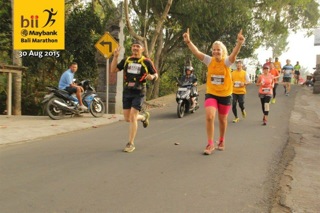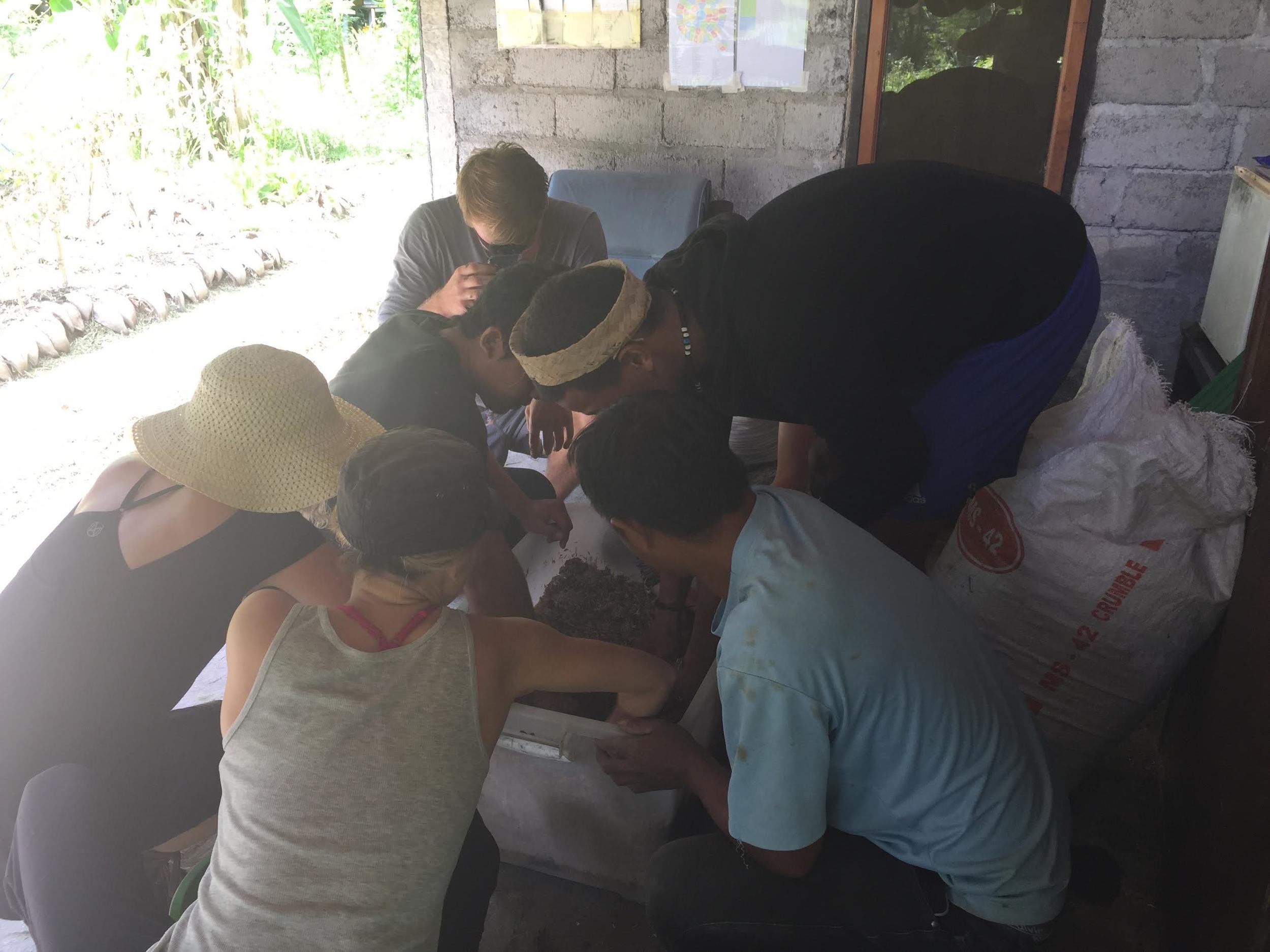Our intern ran the Bali Marathon
/Natalie, our intern in psychology at Jiwa Damai is an officer in the German army and a great athletic woman. She ran the famous 21 km Marathon in Bali with over 5000 participants. Next week she will also go to Java to participate in the Mount Bromo Nationale park marathon. Congratulations Natalie!
New skills, how to open a coconut
/Tyron, our German volunteer is showing Catherine, our Canadian volunteer his freshly acquired skills: how to remove the outer shell of the coconut. Upon which Catherine, using the local tools tries to open the precious nut to get to the flesh and the water.
Find out more about our volunteer and internship programs
Working with the coconuts
/Kadek, one of our Balinese Team member is picking and packing the shells left after opening the coconuts in bags. We use them in our gardens or we sell them.
Tyron is opening the kernel of the coconut and Sabine our Austrian Yoga teacher is harvesting the precious water which makes a most nutrient rich drink.
Taking care of the elephants
/Taking good care of
i’s elephants. Shannon, our volunteer, and Sabine, our Austrian volunteer have taken on the task of cleaning one of our elephants lads from the dust fallout from the volcanic ash which came down a few months ago. The elephant lady is getting a thorough bath and cleaning to let her shine agin in her grey coat.
Our very own Rosella Tea
/The roselle or asam belanda (Hibiscus sabdariffa) is a species of hibiscus, and in Malaysia it is often referred to as "Ribena plant" as roselle juice tastes similar to Ribena. It can grow up to 2–2.5 m tall with wide leaves that are deeply three to five-lobed. The leaves and young shoots can be used in cooking.
The red calyx is harvested to make rosella juice, syrup or jam. We use if for making tea. Simply peel the calyx and remove the seed capsule and pour hot water on top of it.
Two year research on the coconut beetle
/Here we have described in detail our research and holistic organic treatment to reduce the numbers of the damaging beetles in our trees. Oryctes Rhinoceros L. is an endemic pest of Asia that causes devastating damages to coconut palm tree plantations. What is the effective method to organically and naturally reduce the number of coconut beetles? We would like to share with you the results.
Please, see here the English version and here the version in Bahasa Indonesia. For consultation and treatments, please connect with us> jiwadamaibali@ gmail.com
Making Bokashi Balls for Our Pond
/After removal of all and cleaning the pond, we began to make Bokashi balls. These would be placed under the big stones to allow the Effective Micro-organisms(EM) to settle into the stones.The Bokashi Balls are made of clay, rice bran and EM. We are happy to share with you our method of making this highly useful Bokashi balls.
10 clay soil
1-2 rice bran
1-2 EM mixture with water
Cleaning the pond
/Jiwa Damai is surrounded by beautiful ponds teeming with life. However, due to the ash coming down with the rain from the last volcanic eruption on the neighboring island, our stones in the pond, which are full with algae were covered completely with the ash. The fish feed on these algae and all of a sudden there was no food left. The ash also prevented the algae to receive light and hence they did not grow anymore.
We had to search for means how to remove the ash from the stones. A water vacuum machine we bought did not do the trick.
The only other way was to empty the pond and clean it out. This was sad, since the pool had developed its own micro climate with its various inhabitants, and we had to destroy this. The stones were also the seat of many micro organisms, especially EM. Having this micro climate surrounding the buildings of Jiwa Damai, prevented mosquito larvae from hatching and both large buildings were nearly mosquito free.
These ponds are the pride of Jiwa Damai, teeming with life, surrounding our main building and giving it its unique charme. They have a concrete base and the large river stones were added later to provide hiding for the fish and our eel as well as many crabs and frogs. To keep the water clear we had added many bags of Geolite, a stone in ground down form, which draws dirt to itself. All these needed to be considered
1. Catch all the fish and other inhabitants and take to neighboring pool
2. Remove all the stones and clean from ash
3. Remove Geolite bags and clean
3. Clean the pond floor from the ash
A huge job awaited us!






















